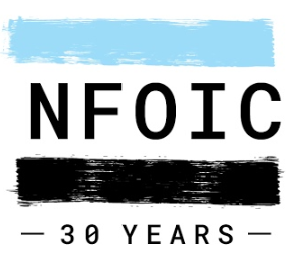Blog Posts
D.C. Open Government Coalition Raises Questions About Incomplete Body Camera Video of Deadly Interactions with D.C. Police
Fritz Mulhauser | August 9, 2020 | Last modified: August 14, 2020
D.C. officials on July 31 released selected videos from three fatal incidents in 2018 involving Metropolitan Police Department officers, two shootings and a collision of a dirt bike and a police cruiser. The video is here.
The released video includes segments from officers’ cameras, from a non-police surveillance camera, on-screen text and narration. One segment is shown in slow motion as a voice explains what the viewer should see. The entire released material is just over eight minutes long—clearly just a small fraction of what exists.
For the Washington Post, Peter Hermann, Michael Brice-Saddler, Keith L. Alexander, and Rachel Chason (assisted by Clarence Williams) dived back into the cases, reporting not only the new video but other perspectives on what it shows (such as views of victims’ families and their attorneys) as well as the years of effort to learn what happened through internal investigations, families’ requests for explanations, and two pending lawsuits.
Internal MPD reviews are closed, according to the Post. The use of force in the two shootings was ruled justified; the cruiser driver was suspended for running a stop sign.
The video release might never have happened. But the D.C. Council in an emergency police reform bill passed July 7 for the first time required release of “recordings of all officers who have committed an officer-involved death since the Body-Worn Camera Program was launched on October 1,2014.”
The law allows victims of use of force and next of kin of deceased victims to veto video release. They have done so in four cases. The law does not authorize partial release or redaction (blurring some areas of the video screen) yet all the released videos were heavily edited and redacted. (Police told reporters more video will be released later.)
The mandated release comes after years of public concern that police secrecy had made video from the new body-worn cameras practically useless for the public and press. D.C. law, passed in 2015 with strong community support after the mayor tried to keep all body-cam video under wraps, has required video to be open to the public on request under the Freedom of Information Act. But delays and huge fees linked to controversial over-redactions have drawn public criticism such as the Council heard from the Coalition and others (testimony here) in a hearing in late 2019. The law also gave the mayor authority to release video but she has done so rarely.
This July 31 release of incomplete, redacted videos demonstrates that further D.C. Council action is needed. Amendments should broaden the required release to ensure full police accountability and inform meaningful public debate that can be part of the work needed to rebuild frayed trust in D.C. law enforcement. These are public records of events of great public interest and concern. Full transparency requires amendments, specifically:
- Full video from all officers present should be promptly released in most, if not all, cases.
- Redacted video should rarely be needed. Usually in public places there is no right to privacy; after all, anyone walking by could see the events. The public interest should weigh heavily in favor of disclosure. The Coalition’s request for a legal opinion from the Office of Open Government on the MPD redaction policy (based we believe on misreading the law of privacy) is pending.
- The veto should be revisited. As the Council provided in the first version of the emergency police law (that the mayor never signed), victims and relatives should not be able, alone, to stop public release. This happened in four of the seven cases reported. The law sensibly requires that families be able to see the full video in advance in a suitable setting; and like any victims of violence, they should have access to counseling. But police involved shootings or other major use of force incidents are not private events.
Kevin Donahue, the deputy mayor for public safety, acknowledged to the Post that the videos “resolve some questions that people may have, but they don’t resolve others.” But D.C. government release like that on July 31 of only selected videos, edited and narrated with official views, contributes needless suspicion. Release should allow the parties and the community to reach their own conclusions from open and complete video and audio data.
The police reform commission that will go to work soon as called for in the same July 7 emergency law should review body-worn camera video release policy. And the permanent police reform bill to be developed in coming months should include the amendments needed to make police video a truly useful tool of accountability and public education.
